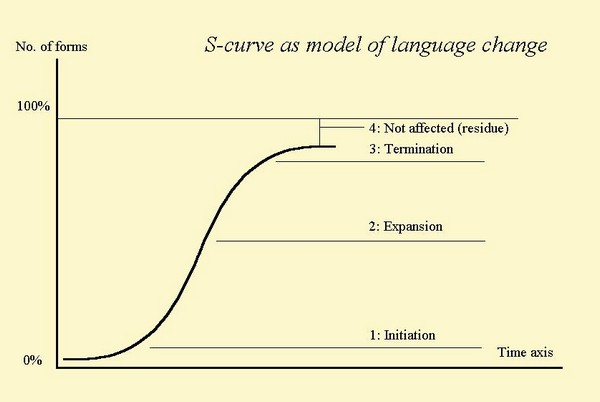




As a relatively recent discipline, sociolinguistics investigates the use of language in society, particularly in order to determine what the possible reasons for language variation are and hence to understand more about the process of language change. This change has been shown to proceed in a manner which looks like an S-curve (slow start, quick middle section with a tapering off at the top).

• Various methods have been developed in sociolinguistics for ensuring that one's data is random and objective. The main consideration here is whether speakers are aware that they are being observed by the linguist and, if so, whether they behave naturally or not.
• The varieties of language examined by sociolinguists are usually urban and in particular take account of the factors class, age and sex. The central element in a sociolinguist study is the linguistic variable — some item of language (phonological, morphological, syntactic or semantic) — which is suspected of varying systematically in correlation with the factors such mentioned.
• There are various kinds of speech community depending on linguistic configuration. Diglossia involves a division of languages according to function, whereas a bilingual community has two languages without such a functional distribution.
• The social development of a language can lead to split. This in turn many involve the question of language maintenance and preservation. If a language is discontinued by its entire community one speaks of language death.
• An important aspect of the social use of language involves the means of addressing others. German, like other European languages apart from English, has a pronominal distinction between acquaintances and strangers which is connected with the notions of power and solidarity expressed in language.

Website design / content / graphics by Fakhar Alam © 2015 Prof. Fakhar Alam